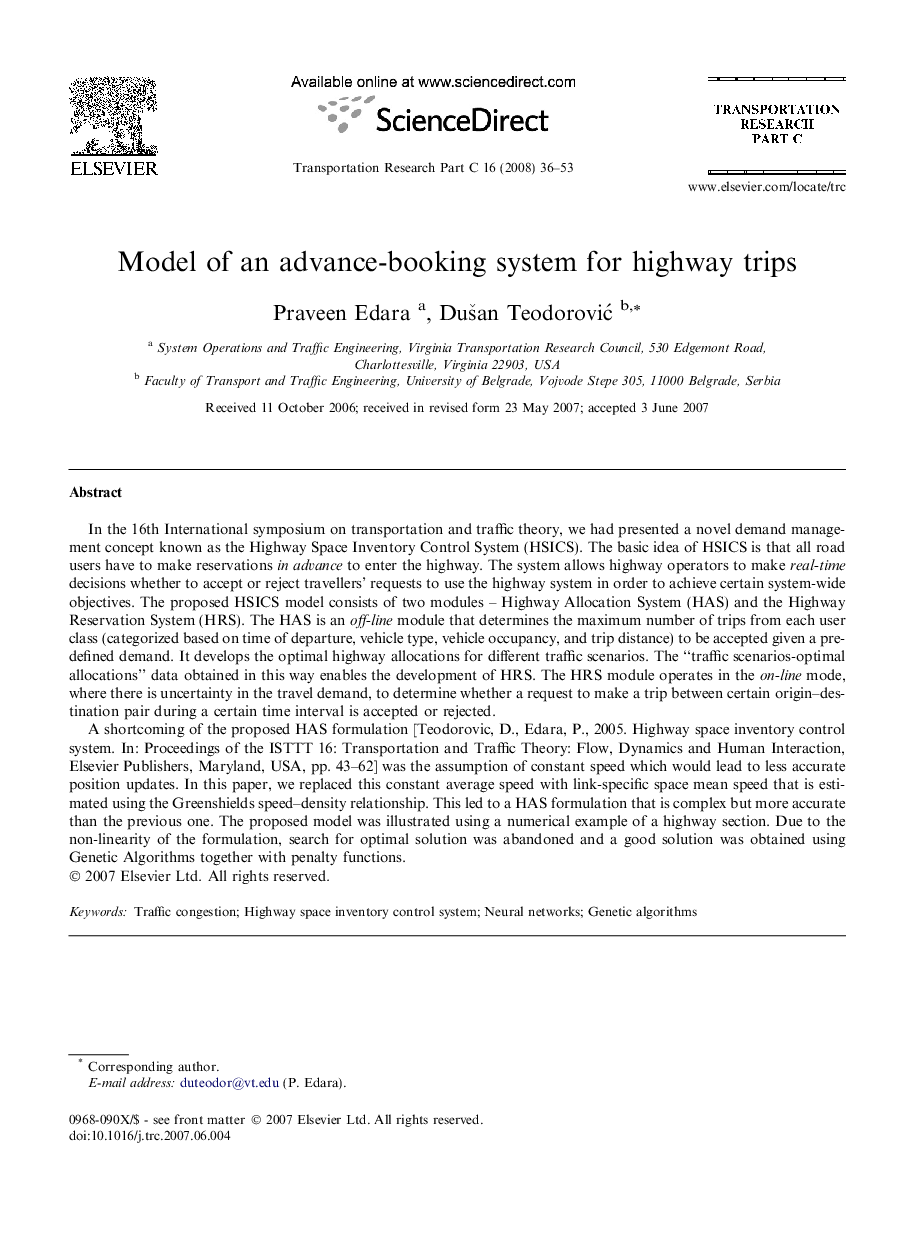| Article ID | Journal | Published Year | Pages | File Type |
|---|---|---|---|---|
| 525377 | Transportation Research Part C: Emerging Technologies | 2008 | 18 Pages |
In the 16th International symposium on transportation and traffic theory, we had presented a novel demand management concept known as the Highway Space Inventory Control System (HSICS). The basic idea of HSICS is that all road users have to make reservations in advance to enter the highway. The system allows highway operators to make real-time decisions whether to accept or reject travellers’ requests to use the highway system in order to achieve certain system-wide objectives. The proposed HSICS model consists of two modules – Highway Allocation System (HAS) and the Highway Reservation System (HRS). The HAS is an off-line module that determines the maximum number of trips from each user class (categorized based on time of departure, vehicle type, vehicle occupancy, and trip distance) to be accepted given a pre-defined demand. It develops the optimal highway allocations for different traffic scenarios. The “traffic scenarios-optimal allocations” data obtained in this way enables the development of HRS. The HRS module operates in the on-line mode, where there is uncertainty in the travel demand, to determine whether a request to make a trip between certain origin–destination pair during a certain time interval is accepted or rejected.A shortcoming of the proposed HAS formulation [Teodorovic, D., Edara, P., 2005. Highway space inventory control system. In: Proceedings of the ISTTT 16: Transportation and Traffic Theory: Flow, Dynamics and Human Interaction, Elsevier Publishers, Maryland, USA, pp. 43–62] was the assumption of constant speed which would lead to less accurate position updates. In this paper, we replaced this constant average speed with link-specific space mean speed that is estimated using the Greenshields speed–density relationship. This led to a HAS formulation that is complex but more accurate than the previous one. The proposed model was illustrated using a numerical example of a highway section. Due to the non-linearity of the formulation, search for optimal solution was abandoned and a good solution was obtained using Genetic Algorithms together with penalty functions.
